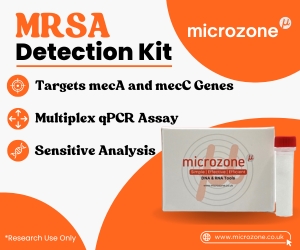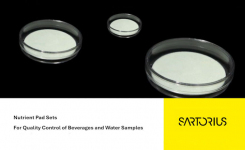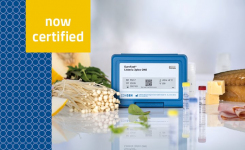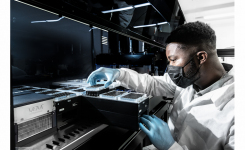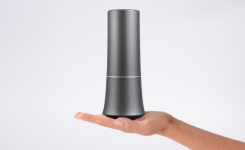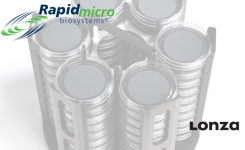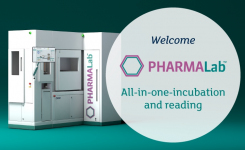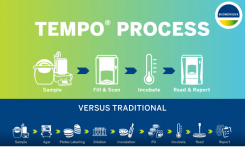To meet the challenges of the new FDA microbiological regulations requires simpler, faster, and more streamlined tests. These tests have to comply with the methodology described in the relevant USP chapters. The BioLumix system, as with any other alternative testing system, has to be validated against the new chapters of USP (<2021>, <2022>, and <2023>). This article describes the validation protocol used. The validated BioLumix system allows companies to greatly reduce the amount of time and money required to have their samples tested by independent outside laboratories. This fully automated system delivers much faster results generating an automated certificate of analysis within 48 hours. Consequently, it enables earlier release of raw materials and finished products while adding profits to a company's bottom line. Nutraceutical and dietary supplement cGMPs require that manufacturers take steps to ensure products are free of contamination with objectionable microorganisms. Objectionable organisms are organisms that might jeopardize the safety of the products or organisms that are able to grow in the product, affecting its stability. Therefore, manufacturers need to test raw materials and finished products for relevant microorganisms. Guidelines and considerations to help manufacturers determine the appropriate test(s) are found in chapter <2023>. The actual quantitative and qualitative testing procedures are found in chapters <2021> and <2022>. The actual official ruling on dietary supplement cGMPs (21CFR Part 111) can be found in chapter <2750>. Even the facilities that are subcontracting their microbiology testing need to become very familiar with these chapters, since many outside laboratories are following BAM or AOAC methodology rather than the USP methodology. Understanding the appropriate testing procedures and the results obtained for a specific product will dictate how and when the manufacturer should release product and issue recalls if needed. Under the current edition for Nutraceutical, in addition to TAMC and TYMC, chapter <2021> includes Enterobacterial Count (bile-tolerant Gram negatives), whereas chapter <2022> covers tests for S. aureus, Salmonella species, E. coli and Clostridia. USP recommends microbial limits for different types of raw materials and finished products. As an example, for dried or powdered botanicals, the recommended limit for TAMC is 105 CFU/g, whereas for TYMC and Enterobacterial Count the recommended limit is 103 CFU/g. Salmonella and E. coli must be absent in 10 grams from this product. A common practice in industry is to test only for TAMC and TYMC to reduce costs. However, it must be realized that these tests do not reveal any indication as to what type of microorganism might be growing in the raw material or finished product. The new required Enterobacterial count test will help to predict the presence of pathogens such as E. coli or Salmonella but it will not provide any indication of S. aureus or Clostridia.
Nevertheless, this test is a limit test, which means that the product can still contain Enterobacteriaceae within a specified range; so, without an additional pathogen specific test, a single colony of E. coli or Salmonella could go unrecognized.
It is important to consider that raw materials can be a primary source of product contamination with objectionable microorganisms. Ingredients of animal or botanical origin that are not highly processed, or that have an unpredictable level of microbiological contamination, require more frequent testing than synthetic or well-characterized products.
The quality of finished product with respect to microbial growth should never be undervalued and maintaining appropriate microbiological product attributes is crucial. It is always better to spend a few extra dollars on additional testing rather than paying for it in lawsuits or recalls.
The BioLumix system is comprised of an instrument with a capacity for testing 32 individual assay vials, software, and disposable vials. Each instrument serves as an incubator. Up to 32 instruments can be connected to one computer.
The software enables rapid, real-time results to be transferred to where they are needed most, without any operator involvement.
| The available disposable vials include: total aerobic count (TAC), Yeast and Mold (YM), Enterobacteriaceae (ENT), E. coli (EC), Pseudomonas (PSE), Staphylococcus (STA) and Salmonella (SAL). All assay vials are provided with a ready to use sterile media and a certificate of analysis. |  | Validation Elements Installation Qualification: Includes major component identification and validation, validation of environmental conditions, electrical requirements, computer qualification, installation checklist, and calibration docmentation. Operation Qualification: Includes a unique SOP for all product assay combinations that need to be performed, training documents, software characteristics, certification and verification of 21 CR part 11 compliance, as well as an operation checklist. Performance Qualification: In the heart of the validation package. It includes: - Side-by-side comparison of the BioLumix data to USP methodology. This comparison is done individually for each assay. For example for Total Aerobic Count 159 samples were analyzed for total aerobic count at various specification levels. 113 samples were below spec by both methods, while 46 were above the specified level by both methods. There was 100% agreement between the two methods. For Yeast and Mold Count 142 samples were analyzed for yeast and mold at various specification levels. 108 samples were below spec by both methods, while 32 were above the specified level by both methods. There were two samples below the specified level by the BioLumix method and just above the specified level by plates. There was 98.6% % agreement between the two methods. Similar comparisons were conducted for Enterobacteriaceae, E. coli, S. aureus, and P. aeruginosa.
- Specificity (also call inclusivity and exclusivity): For each of the different vials the specificity was determined. For Total aerobic count 80 well diverse bacteria were inoculated into the TAC vial. All organisms tested detected by the TAC vials. For Enterobacteriaceae, 29 bacteria belonging to the Enterobacteriaceae genus were tested. All detected in the vial. 18 bacteria strains that do not belong to the genus Enterobacteriaceae were also tested in the Enterobacteriaceae vial and none of them detected in the vial. 10 E. coli strains were tested in the E. coli vial, and all detected in the vial. 37 bacteria strains that are not E. coli were also tested and none detected in the vial. All other vials were tested.
- Detection Limit: The limit of detection for the BioLumix system is equal or better than the plate count method and is close to one viable organism capable of growth in the medium. In several cases one organism was detected in the vial, and not in the plates. With levels of 1-2 colonies/ to a vial or a plate the BioLumix was able to detect their presence in 16/20 cases while the plate count method was only capable of detecting 12/20. The variability of the vials was equal or better than the plate count method.
- Repeatability: The standard deviation for each of the media was determined using naturally contaminated samples and samples inoculated with various organisms. Click here for reproducibility data.
- Robustness: Three parameters were used to test the robustness of the BioLumix system - The effect of changes in the instrument incubator temperature, the effect of sample size, and the effect of medium volume in the vial. The robustness was tested in various media with several repetitions. The BioLumix system appears to be very robust and remain unaffected by small deliberate variations in method parameters. It shows high precision of test results obtained by analyzing the same microorganisms under a variety of different conditions.
- Ruggedness: Three parameters were used to test the ruggedness of the BioLumix system - Effect of Analyst, effect of unit (instrument), and effect of reagent lots.
Two analysts tested two different media (total aerobic count and E. coli medium) with five diverse types of bacteria in each (a total of 10 paired data sets of 4 vials each). The data was presented and an ANOVA analysis shows that there was no significant difference in results among the analysts. Two different instrument were used with two different media (total aerobic count and Enterobacteriaceae medium), with four organism per media. The data was presented and an ANOVA analysis shows that there was no significant difference in results among the machines utilized. Three different lots of each medium were tested in this study. Three types of media (total aerobic count, coliform medium and E. coli medium), were tested each with four different bacteria. The data was presented and an ANOVA analysis shows that there was no significant difference in results among the lots of media. Therefore, the BioLumix system appears to be very rugged with high precision of test results obtained by analyzing the same microorganisms under a variety of different conditions.
- False Negative: A false negative is a test in which samples that are inoculated or naturally contaminated generate a positive result in the reference method (plate count) but are negative in the test method (BioLumix). Two naturally contaminated (wild Yam and Spirulina products) were used, each was subdivided into 10 samples of 10 gr. and tested by the plate count method and the BioLumix dilute to spec approach. Total count: Two levels of specifications (10,000 cfu/gr. and 1,000 cfu/gr.) were tested for each product. The BioLumix procedure detected correctly all 20 sample combinations as being above the specified level. In one case the plate count method showed a count below the spec level although the remaining 9 samples of the same lot were above the specified level. Yeast and mold: two levels of specifications (100 cfu/gr. and 10 cfu/gr.) were tested for each product. Both methods correctly detected that the samples were above the specified level. The BioLumix system had no false negative results.
- False Positive: A false positive is a test in which a sample that is not inoculated with the target organism generates a positive result in the BioLumix system but not in the Plate Count method. Two assays (total aerobic count and Yeast and Mold) were used to test the false negative rate of the BioLumix system. The total count yielded a 2% false positive rate while the yeast and mold yielded 0% false positive rate.
|




